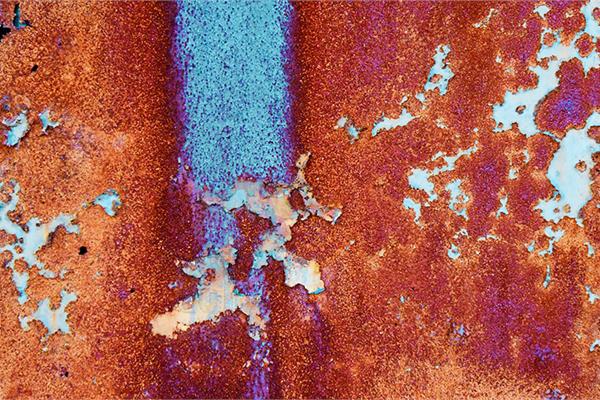
Recent studies show that the volume of microplastics from paint on steel surfaces that enter the ocean every year could be as high as 1.5-2.25 million tonnes, equivalent to 150-225 billion empty plastic bottles.
Until recently, microplastics that enter the ocean from paint have not received a lot of attention but unless paint residuals are collected during surface preparation and the maintenance process, they will largely end up in the ocean as microplastics.
Microplastics come from the impact of corrosion, wear and tear and, most significantly, from the traditional open-blasting methods used to maintain steel surfaces. In fact, open sandblasting and water jetting, which are the predominant methods of surface maintenance used at an industrial scale worldwide, count various but limited degrees of waste collection and recycling. There is a certain level of collection inside controlled environments like shipyards. However, offshore, on oil rigs, ocean wind farms and ships, and in many situations on-shore, such as bridges, there is considerably less waste collection.
The most quoted source of data on how much microplastics from paint enters the ocean each year gives a figure of 60,000 tonnes/year, which is the equivalent of six billion empty plastic bottles being dumped in the ocean every year. However, recent research found that despite it being a big figure, it falls short of the real size of the problem for two main reasons:
- It only includes marine coatings, representing 4% of all paint volume, and does not include Industrial Maintenance (IM) and Protective Coating (PC) which represent another 11% of all global paint volumes sold;
- It works with the 2009 OECD estimate that assumes 1 % of paint applied falls off each year (meaning an average paint life of 100 years), while industry experience shows that, in fact, industrial and marine paints have an average life of approximately 20 years or about 5% of paint falls off each year.
For these reasons, the real level of paint microplastics entering the environment and ocean each year could be higher than 60,000 tonnes, to the point that
other reports conclude that
paint is the second-largest source of microplastics in the ocean. It has to be noted though, that the volume is associated with uncertainty, while the data and information available for the pollution coming from car tyres, which is the primary source of microplastics in the ocean, is more reliable.
Other data that suggest that 60,000 tonnes is a much lower figure than expected takes into consideration the amount of paint applied to industrial and marine steel structures every year, which is more than six million tonnes.
Based on this, it is estimated that the real level of paint microplastics emissions to the ocean every year could be as high as 1.5-2.25 million tonnes. This is based on the assumption that 50-75% of the paint residuals are not collected.
"Given we know that open blasting without collection holds a higher market share of surface maintenance than this, the actual level of emissions is probably at the higher upper end of the range", declare Declan McAdams and Tore Angelskår, respectively the Chairman and CEO of Pinovo in an article published on the World Economic Forum's Agenda.
If we put these figures into context, we can conclude that microplastics from paint represent a meaningful percentage of the 8 million tonnes of plastic that enters the oceans each year. In addition, it can also help us better understand where some of the estimated 12-21 million tonnes of microplastics in the Atlantic Ocean, as highlighted in a recent study, have come from.
The risks
Recent studies show that microplastics have seeped into soil, fish and air, posing a threat to both animal and human health.
In fact, ingested microplastic particles can physically damage organs and leach hazardous chemicals - from the hormone-disrupting bisphenol A (BPA) to pesticides - that can compromise immune function and stymie growth and reproduction.
A possible solution to reduce microplastics from paint
Even though there is still
considerable uncertainty regarding the extent of emissions of microplastics from paint into the ocean, it still represents a significant problem that deserves a lot more research and regulatory and policy-maker attention.
"One of the things that the industry can do to help solving the issue is collecting the used blasting material with its heavy metals and other toxic components, and most importantly, the rust and paint residuals as they are blasted off the steel assets, which will otherwise find their way, directly or indirectly, into the ocean", explain McAdams and Angelskår. "In addition, innovative solution in surface maintenance, such as circular sandblasting, can reduce the emissions of microplastics to zero. In addition, the circular solution also recycles the blasting material, reducing grit consumption by 80-90%, which generates significant reductions in CO2 emission".